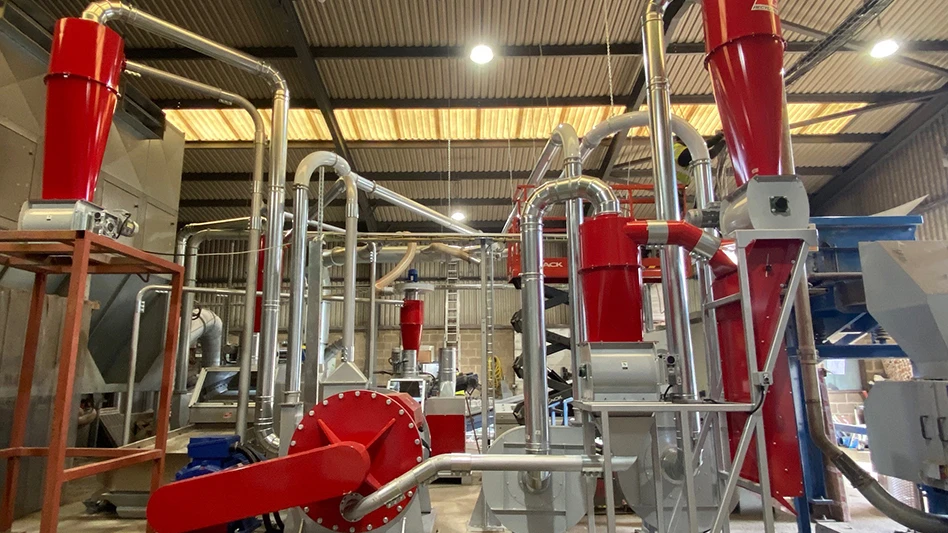
Photo courtesy of Sackers Scrap Metal & Waste Recycling
United Kingdom-based Sackers Scrap Metal & Waste Recycling has invested some 350,000 British pounds sterling ($432,000) to increase its wire and cable recycling capacity.
The company calls its new Turbo Mill “top-of-the-range recycling equipment” that enables Sackers to enhance its existing production process that turns wire and cable scrap into pure copper and marketable plastic.
Sackers’ Turbo Mill was supplied by Italy-based MG Recycling, which says its Turbo Mills use pulverization technology that employs hammers and tooth armors. The material is pulverized to achieve increased production and separation rates.
“The new process will increase the copper quality to 99.95 percent purity by better media separation technology,” Sackers says, adding that the MG Turbo Mill also helps it produce a purer plastic recycling product.
“We are always looking for ways of improving our processes and getting a purer product in all areas of our business,” Sackers CEO David Dodds says. “The purer the product, the better it is for recycling and it’s more desirable to our end customer. Markets are always changing, and technology is advancing, which is always opening new opportunities for the business to continually invest.”
The company says its new investment allows it to recycle more cable faster and more efficiently. The Turbo Mill will operate in tandem with a granulator that cuts and separates the copper in the cable from the plastic.
Sackers estimates its new investment allows it to process 25 percent more metric tons of cable per hour. The 25 percent increase in productivity with the new Turbo Mill will enable the company to recycle up to 900 metric tons of cable per month.
“The purity of the end product of copper and plastic is more desirable for our recycling partners around the world, giving the business more sales outlets and demand for the end products," Sackers says.
Latest from Recycling Today
- BMW Group, Encory launch 'direct recycling’ of batteries
- Loom Carbon, RTI International partner to scale textile recycling technology
- Goodwill Industries of West Michigan, American Glass Mosaics partner to divert glass from landfill
- CARI forms federal advocacy partnership
- Monthly packaging papers shipments down in November
- STEEL Act aims to enhance trade enforcement to prevent dumping of steel in the US
- San Francisco schools introduce compostable lunch trays
- Aduro graduates from Shell GameChanger program





